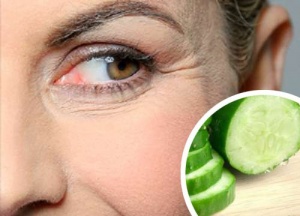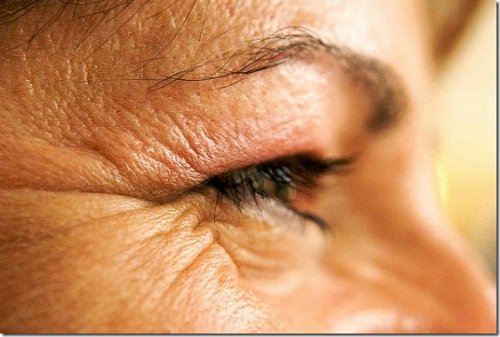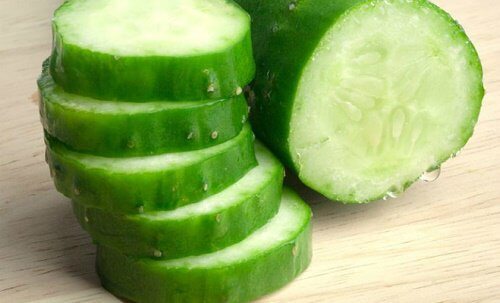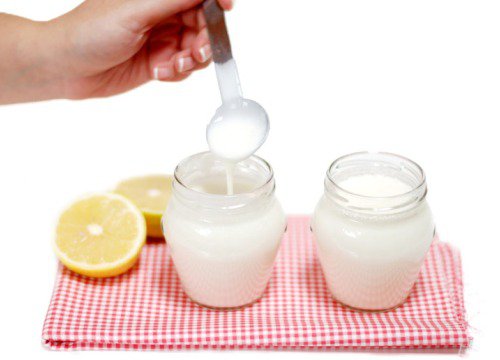Some Natural Tips that are Proven to Reduce Wrinkles


Reviewed and approved by the doctor Karla Henríquez
After a certain age, both men and women start finding that fine lines begin to appear – especially on the face – and the dreaded word is “wrinkles.” Just like everything else that shows the passage of time (like with gray hair), we all try to hide them. In the following article you’ll learn about the best natural methods that are proven to help reduce wrinkles.
There are several tricks you can try at home that will reduce those lines that are increasingly becoming embedded in your skin due to a combination of factors: loss of elasticity, lack of hydration, and poor collagen regeneration.
Natural remedies to help reduce wrinkles
Grapeseed oil
Grapeseed oil has nourishing and moisturizing properties that will help keep your skin healthy and looking youthful longer. It’s especially effective around the eye area, although it is also used to heal wounds. It’s full of antioxidants that reverse the aging process, and when applied to dry skin will keep it hydrated, slowing the development of wrinkles.
Also Read: Foods that Cause Premature Wrinkles
Vitamin E
This vitamin is a savior to dry skin and lubricates the eye area to give it a more youthful appearance. This can reduce wrinkles in terms of appearance. Vitamin E capsules are available in health food stores. Just apply it at bedtime every day for at least a week (or more, depending on what extent you want to reduce wrinkles in terms of appearance).

Coconut oil
Coconut oil may help fight the effects of UV radiation, and also moisturizes dry skin. Use this oil once or twice a week and see if it helps.
Avocados
The natural oils from the avocado fruit are very effective in reducing the appearance of wrinkles around the eyes. Cut an avocado in half and apply some of the pulp to the area that’s prone to lines and wrinkles.
Cucumber
Cucumber is a perfect treatment for tired eyes (which is why it’s always turning up in so many beauty products), but it also has the ability to reduce wrinkles, crow’s feet, and dark circles in terms of appearance. You can simply place slices of raw cucumber over the eyes, or make a paste by mixing the pulp with a little cold water.

Orange juice
Vitamin C isn’t the only thing that oranges provide. Squeeze a little of the fresh juice, dip a cotton ball in it, and apply it to the areas where wrinkles appear in the morning and evening.
Castor oil
This is one of the oldest recipes in the book. Apply a few drops of this oil to the fingertips and then massage it into your skin. Always do this before bedtime and make sure you don’t leave an oily residue on your face. The massaging action helps it reach the deeper layers of the dermis. Repeat this twice a week.
Yogurt
Wash your face and dry it well. Mix a tablespoon of plain yogurt, a tablespoon of honey, half a teaspoon of orange juice and ¼ cup sliced bananas. When you get a homogeneous cream, apply it to your face and let sit for 15 minutes, then rinse with lukewarm water.

Lifestyle habits that can cause wrinkles
Besides using home recipes and the tips mentioned above to remove wrinkles, you also need to change some habits if you want to maintain beautiful, young-looking skin:
Avoid excessive sun exposure
This is the most effective way to keep new wrinkles from appearing. The UV rays from the sun damage the skin’s outer layers and cause dehydration. If you’re going to be outdoors a lot or are heading to the beach, make sure to apply a high protection factor for UVA and UVB rays to avoid this pesky problem. And remember that the sun isn’t only strong in the summertime – you should use sunscreen and wear protective clothing 365 days a year, whether it’s cold, cloudy, or even if it’s raining.

Stop smoking
This bad habit does so much damage to the body, both internally and externally. Smoking not only causes wrinkles around the mouth because of the sucking motion, but also causes toxins to build up under the skin, reducing its natural elasticity and ability to regenerate.
See Also: Recommendations for You to Quit Smoking
And don’t forget, this can happen to you if your partner, parents, coworkers, or kids are smoking near you. Try to limit your exposure to any cigarette smoke.
Exfoliate your skin regularly
There are lots of different types of masks and peels that you can use without damaging your skin. You need to remove all the dirt and particles that are clogging your pores.
Also, when you have wrinkles, it’s easy for makeup and dust to accumulate in the little creases, which makes them more obvious. By exfoliating your skin once a week you help remove dead cells, which can help reduce wrinkles in terms of appearance.
Get better sleep
Every night try to go to bed at the same time, and get at least eight hours of sleep. Try to wake up at the same time every day and if you can, take a little nap in the afternoon.
Getting improper sleep causes the body to produce too much of the hormone cortisol, which breaks down cell formation and is also responsible for raising stress levels. By sleeping more, you allow your body to rest.
Use glasses (both prescription lenses and sunglasses)
If you have vision problems, be sure to wear glasses so you can see clearly and avoid squinting when you have to read a sign or a message on your phone. This helps keep wrinkles from forming around the eye area.
And always be sure to wear sunglasses when you go outside – that way you protect the eye area from UV rays and avoid closing the eyes tightly when the sun shines right in your face.
All cited sources were thoroughly reviewed by our team to ensure their quality, reliability, currency, and validity. The bibliography of this article was considered reliable and of academic or scientific accuracy.
- Palomar-Llatas, F., Fornes-Pujalte, B., Arantón-Areosa, L., & Rumbo-Prieto, J. (2013). Envejecimiento cutáneo y dermatoporosis. Enfermeria Dermatologica.
- Kumar, V., Abbas, A. K., & Aster, J. C. (2013). Piel. In Robbins Patología Humana. https://doi.org/10.1017/CBO9781107415324.004.
- Merino, J., & Noriega, M. (2011). La piel: Estructura y Funciones. Universidad de Cantabria.
This text is provided for informational purposes only and does not replace consultation with a professional. If in doubt, consult your specialist.








